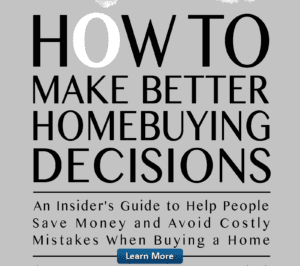What 1.4 Million Empty Homes Mean for Today’s Housing Market MABA MassachusettsRealEstate FirstTimeHomeBuyers MaBuyerAgent
ATTOM has released its Q2 2025 Vacant Property and Zombie Foreclosure Report, showing that one point four million (1,382,480) residential properties, or approximately one point three percent of all homes in the U.S., are vacant. ATTOM’s Q2 report marks the thirteenth consecutive quarter that the vacancy rate has hovered around the one point three percent range.
ATTOM’s analysis shows that two hundred twenty two thousand three hundred and fifty eight properties were in the foreclosure process during quarter two of 2025, up four point eight ppercent from the first quarter of 2025, but down six point three percent year-over-year. Prior to this latest increase, the number of properties in foreclosure had gone down in each of the previous five quarters.
For the study, ATTOM analyzed county tax assessor data for one hundred and four point one million residential properties for vacancy, broken down by foreclosure status and owner-occupancy status in quarter two of 2025. Only metropolitan statistical areas with at least one hundred thousand residential properties, counties with at least fifty thousand residential properties, and zip codes with at least one thousand residential properties were included in the analysis.
In quarter two 2025, seven thousand three hundred and twenty nine of those pre-foreclosure properties (three point three percent) were “zombie” properties, meaning they had been abandoned by their owners and sat vacant during the foreclosure process. The proportion of pre-foreclosure homes that are vacant is essentially the same as quarter one of 2025, but up slightly from two point nine percent during the same period last year.
Zombie properties, which can fall into disrepair and negatively impact property values in a neighborhood, are seen as a sign of an unhealthy housing market and economy. The low rate of zombie properties only one in every fourteen thousand two hundred and seven homes in the U.S. in quarter two of 2025 is indicative of the strength of the post-pandemic housing market.
“Thankfully, we’re not seeing a lot of homes sitting vacant due to pending foreclosures, which is good for families, neighborhoods, and the market,” said Rob Barber, CEO of ATTOM. “However, foreclosure filings have shown a recent uptick with April seeing a fourteen percent increase compared to the same month last year.”
The number of zombie properties increased quarter-over-quarter in thirty states and in D.C., but mostly by small amounts. The changes were also relatively small in the nineteen states that saw their number of zombie properties fall.
“So far, buyers seem to be scooping up these repossessed homes relatively quickly, so they aren’t sitting empty.” Barber said. “Nobody wants to see a return to the days of the 2008 housing crisis when vacant, blighted homes were common in many parts of the country.”
Year-over-year, the biggest percent increases in states that had at least fifty zombie homes were in:
- North Carolina (fifty two point five percent more zombie properties, from fifty nine in quarter two of 2024 to ninety in quarter two of 2025)
- Iowa (up fifty two point one percent, from seventy one to one hundred and eight)
- Texas (up fifty one point nine percent from one hundred and sixty two to two hundred and forty six)
- South Carolina (up forty three point eight percent from sixty four to ninety two)
- Kansas (up twenty nine percent, from sixty nine to eighty nine)
The biggest annual drops among states with at least fifty zombie homes in quarter two of 2024 were:
- Massachusetts (down forty eight point seven percent, from seventy six to thirty nine)
- Maryland (down twenty two point one percent, from eighty six to sixty seven)
- New Jersey (down seventeen point six percent, from two hundred and thirty nine to one hundred ninety seven)
- California (down eight point nine percent, from two hundred and sixty nine to two hundred and forty five)
- Illinois (down eight point eight percent, from seven hundred and twenty four to six hundred and sixty)
Highest Vacancy Rates Reported in the South
The vacancy rate for residential properties in the U.S. has remained steady around one point three percent for the thirteenth consecutive quarter. The states reporting the highest home vacancy rates in quarter two 2025 were:
- Oklahoma (two point four percent)
- Kansas (two point three percent)
- Alabama (two point two percent)
- Missouri (two point two percent)
- West Virginia (two point one percent)
The states with the lowest home vacancy rates in quarter two were reported in:
- New Hampshire (point three percent)
- Vermont (point four percent)
- New Jersey (point five percent)
- Idaho (point five percent)
- Connecticut (point five percent)
Most Large Metro Areas Have Zombie Home Rates Below National Rate
Approximately fifty five percent (seventy six) of the one thirty eight metropolitan statistical areas (MSAs) in our analysis that had at least one hundred thousand residential properties and at least one hundred properties in pre-foreclosure during quarter two of 2025 had zombie foreclosure rates below the national rate of three point three percent.
The metro areas with the highest proportion of pre-foreclosure homes that were vacant were:
- Wichita, Kansas (twelve point one percent)
- Peoria, Illinois (eleven point eight percent)
- Toledo, Ohio (ten point two percent)
- Cedar Rapids, Iowa (ten point two percent)
- Cleveland, Ohio (ten percent)
The metro areas with the lowest proportion of zombie foreclosures were found in:
- Barnstable, Massachusetts (zero percent)
- Atlantic City, New Jersey (point two percent)
- Provo, Utah (point three percent)
- Trenton, New Jersey (point five percent)
- Stockton, California (point six percent)
Investor & Bank-Owned Homes Experience Higher Vacancy Rates
There were twenty four point eight million investor-owned properties in our analysis of quarter two 2025 home data, with a nationwide vacancy rate of three point five percent. included:
- Indiana (seven point three percent)
- Illinois (six point two percent)
- Alabama (six percent)
- Oklahoma (six percent)
- Ohio (five point eight percent)
The states with the lowest investor-owned vacancy rates were:
- New Hampshire (point nine percent)
- Vermont (one percent)
- Idaho (one point two percent)
- Utah (one point five percent)
- North Dakota (one point six percent)
Zip Codes Reporting High Zombie Home Rates
Nearly thirty six percent (seven hundred and eighty one) of the two thousand one hundred and sixty six zip codes in ATTOM’s analysis that had at least twenty five properties in pre-foreclosure during quarter two of 2025 had zombie foreclosure rates above the national rate of three point three percent. While in forty two percent (nine hundred and three) of those zip codes, there were no zombie foreclosures reported.
The zip codes with the highest zombie foreclosure rates were found in:
- sixty one thousand six hundred and five in Peoria, Illinois (fifty one point nine percent)
- forty four thousand one hundred and eight in Cleveland, Ohio (forty two point two percent)
- sixty one thousand six hundred and three in Peoria, Illinois (thirty four point six percent)
- thirty two thousand one hundred and eighteen in Deltona, Florida (thirty four point two percent)
- thirty three thousand seven hundred and eight in Tampa, Florida (thirty three point three percent)
Click here for more on ATTOM’s quarter two analysis of foreclosed and vacant homes.
The post What 1.4 Million Empty Homes Mean for Today’s Housing Market first appeared on The MortgagePoint.

FIRST TIME HOMEBUYERS
Client Testimonial:
 "No amount of reading or web surfing can equal having a competent professional advising you and looking out for your interests. I do not understand why anyone would buy a house in MA without a MABA buyer's broker."
"No amount of reading or web surfing can equal having a competent professional advising you and looking out for your interests. I do not understand why anyone would buy a house in MA without a MABA buyer's broker."
- Samantha and Brendan, Purchased a home in Marlborough, MA 2012
Article From: "Eric C. Peck" Read full article
Get Started with MABA
For no extra cost, let a MABA buyer agent protect your interests



